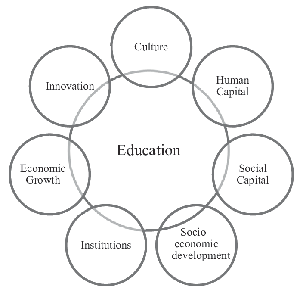Welcome to the fascinating world of education! In this article, we will delve into the acronym “CLT” and explore its significance in the realm of learning. Whether you’re an educator, parent, or simply curious about educational practices, understanding what CLT stands for can enhance your knowledge and inform your decision-making.

Image by bchmsg.yolasite
Understanding the CLT Approach
CLT, or “Collaborative Learning Theory,” is a pedagogical approach that emphasizes students’ active participation in the learning process. By fostering collaboration, communication, and critical thinking skills, CLT aims to cultivate well-rounded learners who can thrive in a dynamic and interconnected world.
Collaborative learning involves students working together in groups, engaging in discussions, solving problems collectively, and reflecting on their learning experiences. This approach goes beyond the traditional teacher-centered model, where students passively receive information. Instead, it encourages students to take an active role in their education, promoting a deeper understanding of the subject matter.
CLT recognizes that learning is a social and interactive process. By interacting with their peers, students can explore different perspectives, challenge their own assumptions, and construct knowledge together. This collaborative approach not only enhances their academic performance but also nurtures essential skills such as teamwork, empathy, and effective communication.
Key Principles of CLT
To effectively implement CLT, it is crucial to understand its key principles. Here are some fundamental principles that underpin the CLT approach:
Active Learning
CLT promotes active learning by encouraging students to engage in hands-on activities, discussions, and problem-solving tasks. This approach enables students to construct meaning from their experiences and develop a deeper understanding of the subject matter.
Shared Responsibility
In CLT, both students and teachers share responsibility for the learning process. Teachers act as facilitators, guiding students and providing support when needed, while students take ownership of their learning by actively participating and collaborating with their peers.
Social Interaction
Collaboration and social interaction are at the core of CLT. By working together, students can exchange ideas, debate concepts, and learn from each other’s experiences. This social interaction not only enhances learning but also develops crucial interpersonal skills.
Reflection and Feedback
CLT encourages students to reflect on their learning experiences and provide feedback to their peers. Reflection promotes metacognition, allowing students to evaluate their own understanding and identify areas for improvement. Peer feedback fosters a supportive learning community where students can learn from each other and grow together.
Benefits of Using CLT in Education
Implementing CLT in education offers numerous benefits for both students and educators. Let’s explore some of the advantages of using CLT:
Improved Learning Outcomes
CLT promotes active engagement and deep learning, resulting in improved academic performance. By actively participating in group activities and discussions, students can gain a deeper understanding of the subject matter and apply their knowledge in real-world contexts.
Enhanced Critical Thinking Skills
Collaborative learning encourages students to think critically, analyze information, and evaluate different perspectives. Through group discussions and problem-solving tasks, students develop the ability to think independently, consider alternative viewpoints, and make informed decisions.
Development of Social Skills
CLT provides students with opportunities to interact with their peers, fostering the development of essential social skills. By working collaboratively, students learn to communicate effectively, resolve conflicts, and appreciate diverse perspectives. These skills are invaluable in the professional world and in building meaningful relationships.
Increased Motivation and Engagement
Collaborative learning creates a dynamic and interactive learning environment that motivates students to actively participate. By working in groups, students feel a sense of ownership and responsibility for their learning, leading to increased motivation and engagement.
Preparation for the Real World
CLT prepares students for the challenges of the modern world, where collaboration and teamwork are essential. By engaging in collaborative activities, students develop the skills necessary to thrive in a globalized and interconnected society.
Implementing CLT in the classroom requires careful planning and consideration. Let’s explore some strategies and techniques for incorporating CLT effectively.
How CLT Promotes Student Engagement and Active Learning
CLT fosters student engagement and active learning by providing opportunities for students to take an active role in their education. Here are some ways CLT promotes student engagement:
Group Projects and Collaborative Assignments
Assigning group projects or collaborative assignments encourages students to work together toward a common goal. This approach promotes active engagement, as students actively contribute their thoughts and ideas, share responsibilities, and learn from their peers.
Classroom Discussions and Debates
Incorporating classroom discussions and debates encourages students to actively participate, express their opinions, and critically analyze different viewpoints. These activities promote active learning, as students engage in meaningful dialogue and construct knowledge collectively.
Problem-Solving Tasks
Presenting students with real-world problems or complex tasks that require collaboration and critical thinking promotes active learning. By working together to find solutions, students develop their problem-solving skills and deepen their understanding of the subject matter.
Peer Teaching
Encouraging students to teach concepts to their peers not only enhances their understanding but also promotes active learning. Peer teaching allows students to engage with the material in a different way and reinforces their knowledge through explaining and discussing the concepts.
By implementing these strategies, educators can create a vibrant and engaging learning environment that fosters active learning and student engagement.
Implementing CLT in the Classroom
To effectively implement CLT, educators need to consider various factors. Here are some essential steps for incorporating CLT in the classroom:
Create Collaborative Learning Spaces: Design the physical environment to facilitate collaboration and group work. Arrange desks in clusters or circles to encourage interaction and communication among students.
Establish Clear Learning Goals: Clearly communicate the learning objectives and expectations to students. Ensure that they understand the purpose and value of collaborative learning.
Provide Structured Guidelines: Set clear guidelines and expectations for group work. Establish roles and responsibilities within groups, and provide guidelines for effective communication and collaboration.
Facilitate Group Dynamics: Monitor group dynamics and provide support when needed. Encourage students to work through conflicts and disagreements constructively.
Assess Individual and Group Performance: Develop assessment methods that evaluate both individual and group performance. Provide feedback on both the process and the outcome of collaborative tasks.
By following these steps, educators can effectively incorporate CLT in their classrooms and create a collaborative learning environment that benefits students.
Examples of CLT Activities and Assessments
To further illustrate how CLT can be implemented in the classroom, let’s explore some examples of CLT activities and assessments:
Jigsaw Method
Divide a complex topic into smaller “pieces” and assign each piece to a different group. Students become experts in their assigned piece and then teach their peers. This activity encourages collaboration, critical thinking, and the sharing of knowledge.
Think-Pair-Share
Pose a question or problem and give students time to think individually. Then, pair them up to discuss their ideas before sharing them with the whole class. This activity promotes active engagement, communication, and the exchange of ideas.
Group Presentations
Assign groups a specific topic or concept to research and present to the class. This activity encourages collaboration, research skills, and effective communication.
Group Projects
Assign a project that requires students to work together in groups to solve a real-world problem or create a product. This activity promotes collaboration, problem-solving, and creativity.
When assessing CLT activities, it is important to consider both individual and group performance. Assessments can include peer evaluations, self-reflections, group presentations, and individual reflections on the collaborative process.
Challenges and Considerations When Using CLT
While CLT offers numerous benefits, there are also challenges and considerations to keep in mind. Here are some common challenges and strategies to overcome them:
Unequal Participation
Some students may dominate group discussions, while others may struggle to contribute. Encourage equal participation by setting clear expectations, establishing group norms, and providing opportunities for quieter students to contribute.
Group Dynamics and Conflicts
Group work can sometimes lead to conflicts or disagreements. Teach students conflict resolution strategies and provide guidance on how to work through challenges constructively.
Time Management
Collaborative activities may require more time than traditional instruction. Plan and allocate sufficient time for group work, ensuring that it aligns with the curriculum and learning objectives.
Assessment of Individual Contributions
Assessing individual contributions within a group can be challenging. Use a combination of self-assessments, peer evaluations, and teacher observations to evaluate both individual and group performance.
By proactively addressing these challenges, educators can maximize the benefits of CLT and create a supportive and engaging learning environment.
Resources and Tools for Incorporating CLT in Education
To support educators in implementing CLT, various resources and tools are available. Here are some valuable resources for incorporating CLT in education:
Online Collaboration Tools
Platforms such as Google Suite, Microsoft Teams, or Padlet provide collaborative spaces for students to work together, share ideas, and collaborate on projects.
Professional Development Programs
Participate in professional development programs or workshops that focus on collaborative learning strategies. These programs provide valuable insights, resources, and guidance for implementing CLT effectively.
Educational Websites and Blogs
Explore educational websites and blogs that offer resources, lesson plans, and practical tips for incorporating CLT in the classroom. Some popular websites include Edutopia, TeachThought, and ASCD.
Research Articles and Books
Stay informed about the latest research and literature on collaborative learning. Academic journals and books offer valuable insights into the theory and practice of CLT.
Educators can leverage these resources to enhance their understanding of CLT and discover practical strategies for incorporating it into their teaching practice.
Conclusion
Collaborative Learning Theory (CLT) offers a powerful framework for transforming education. By emphasizing active participation, collaboration, and critical thinking, CLT prepares students to thrive in a dynamic and interconnected world.
By implementing CLT in the classroom, educators can foster a vibrant and engaging learning environment that promotes deeper understanding, essential skills development, and student agency. As technology continues to advance and the world becomes increasingly interconnected, CLT will play a crucial role in preparing students for the challenges and opportunities of the future.



